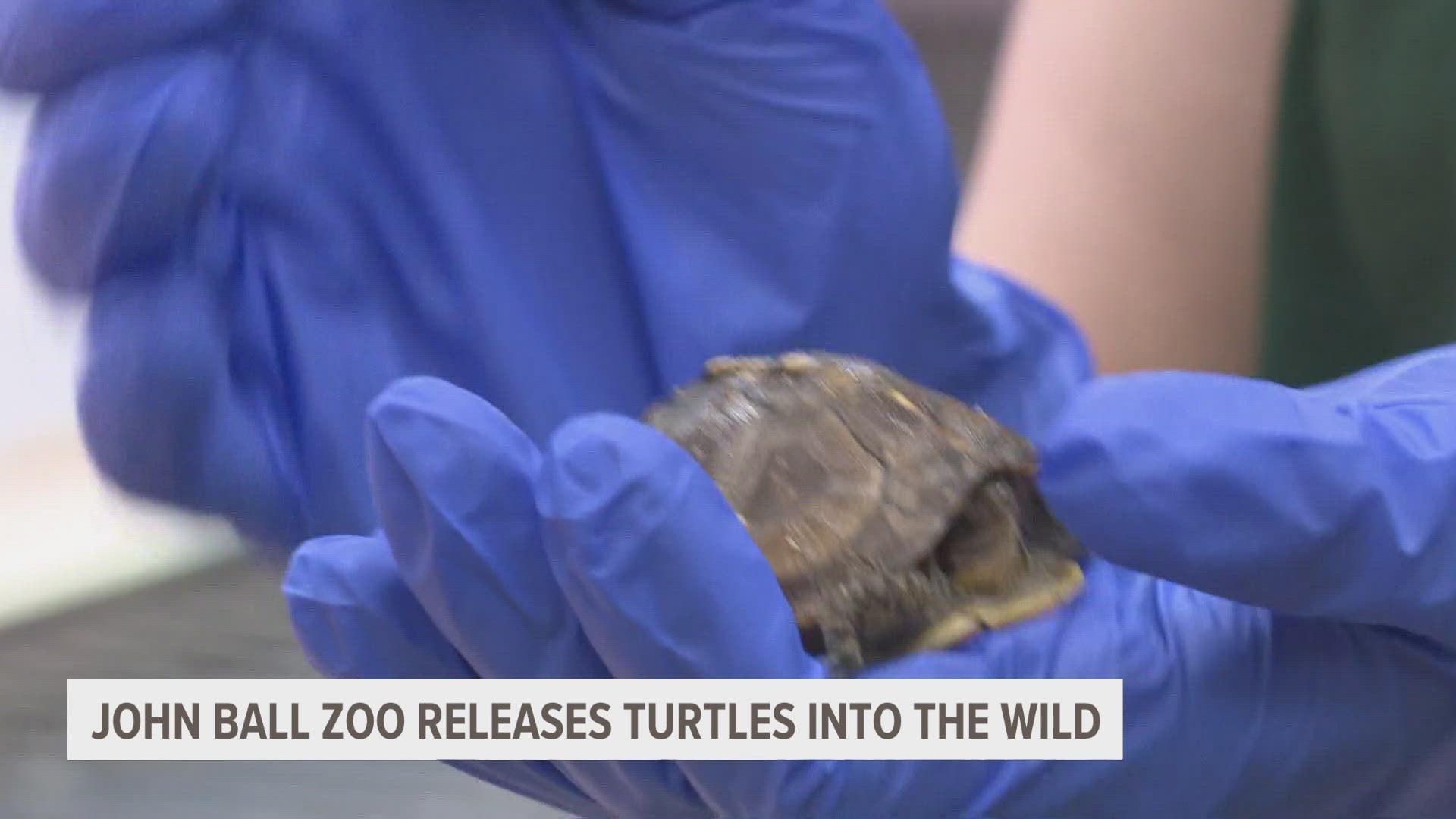GRAND RAPIDS, Mich. — The John Ball Zoo is releasing their eastern box turtles into the wild.
Each year, the zoo's conservation team gives groups of turtles a "head start" at the zoo. Head starting is a conservation practice where young animals are raised with the help of humans and are released when they stand more of a chance against predators.
"So, this is a technique that has really direct benefits for these turtles," said Jennifer Moore, associate professor of biology at Grand Valley State University. "It sort of gets them over those vulnerable times where that mortality is really high. And we can make sure using head starting that we're putting really more robust turtles on the landscape and and we're increasing our population numbers, basically."
This year, the zoo has already released 24 turtles into the wild.
Just like the turtles aren't alone in the process, neither is the zoo. The John Ball Zoo is joined by GVSU and the Pierce Cedar Creek Institute in their efforts.
Fieldwork helps determine if head starting is an effective tool for conservation. The zoo said results have been promising.
Faith Kuzma was previously a graduate student at GVSU and worked with the zoo to track and collect data on head-started turtles. She's now the field conservation coordinator at John Ball Zoo and her research is helping to make the case for head starting as a beneficial conservation practice.
The zoo said from 2019 to 2023, they released 65 head-started turtles, 50 of which were radio-tracked for Kuzma's graduation thesis.
Once in the wild, the turtles are monitored for survivorship, normal turtle behaviors and to see if they have the same home range as wild turtles.
According to the zoo, the research shows that head-starting turtles is significantly improving survival rates for eastern box turtles.
“We believe the larger size of our head-started turtles is what leads to their survival rates,” Kuzma said. “These turtles were more than five times larger after spending nine months at the Zoo than wild hatchlings of the same age, and that larger size makes them less vulnerable to common turtle predators, giving them a survival advantage.”
Out of the 24 turtles that were recently released, the zoo will be tracking 10 of them.
Ellen Holste, a research and community engagement manager at Pierce Cedar Creek Institute, said there are ways you can help the turtles as well.
She said if you're driving and you see a turtle on or near the road to slow down, as it could be a turtle habitat. If it's safe to stop and help the turtle, she said you can help it cross the road in the direction they were going.
Holste also stressed the importance of leaving wild turtles in the wild, because they're not pets.
“Turtles are a very important part of Michigan’s ecosystem, and the research John Ball Zoo and our partners are conducting helps bolster conservation for multiple species,” said Bill Flanagan, conservation manager at John Ball Zoo. “We are always happy to see these turtles be released into the wild where our research is showing they have a promising future.”
You can learn more about John Ball Zoo’s conservation projects on its website.
►Make it easy to keep up to date with more stories like this. Download the 13 ON YOUR SIDE app now.
Have a news tip? Email news@13onyourside.com, visit our Facebook page or Twitter. Subscribe to our YouTube channel.
Watch 13 ON YOUR SIDE for free on Roku, Amazon Fire TV Stick, Apple TV and on your phone.

